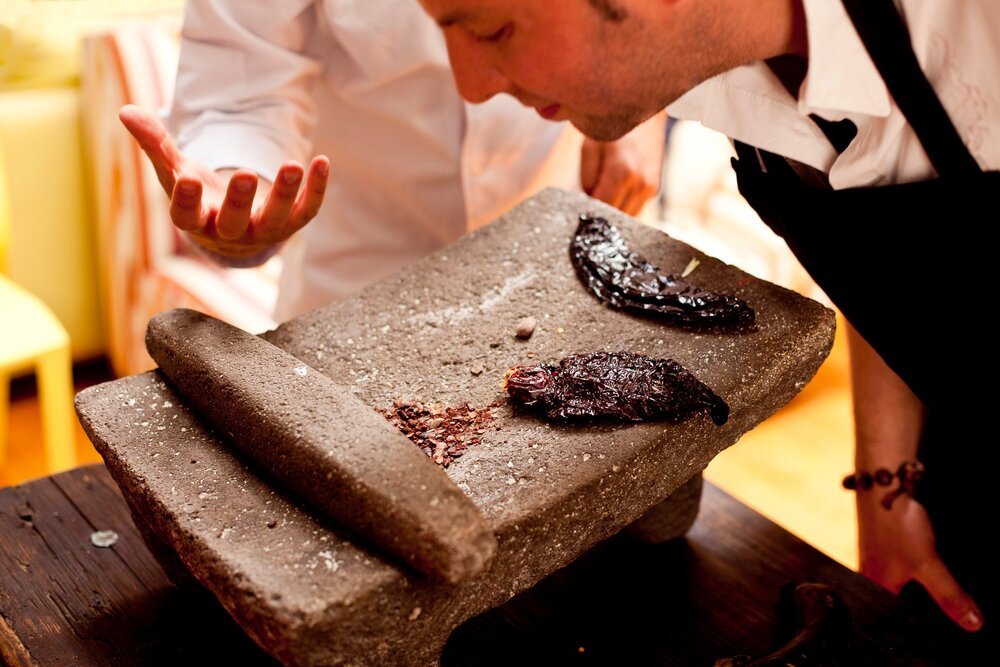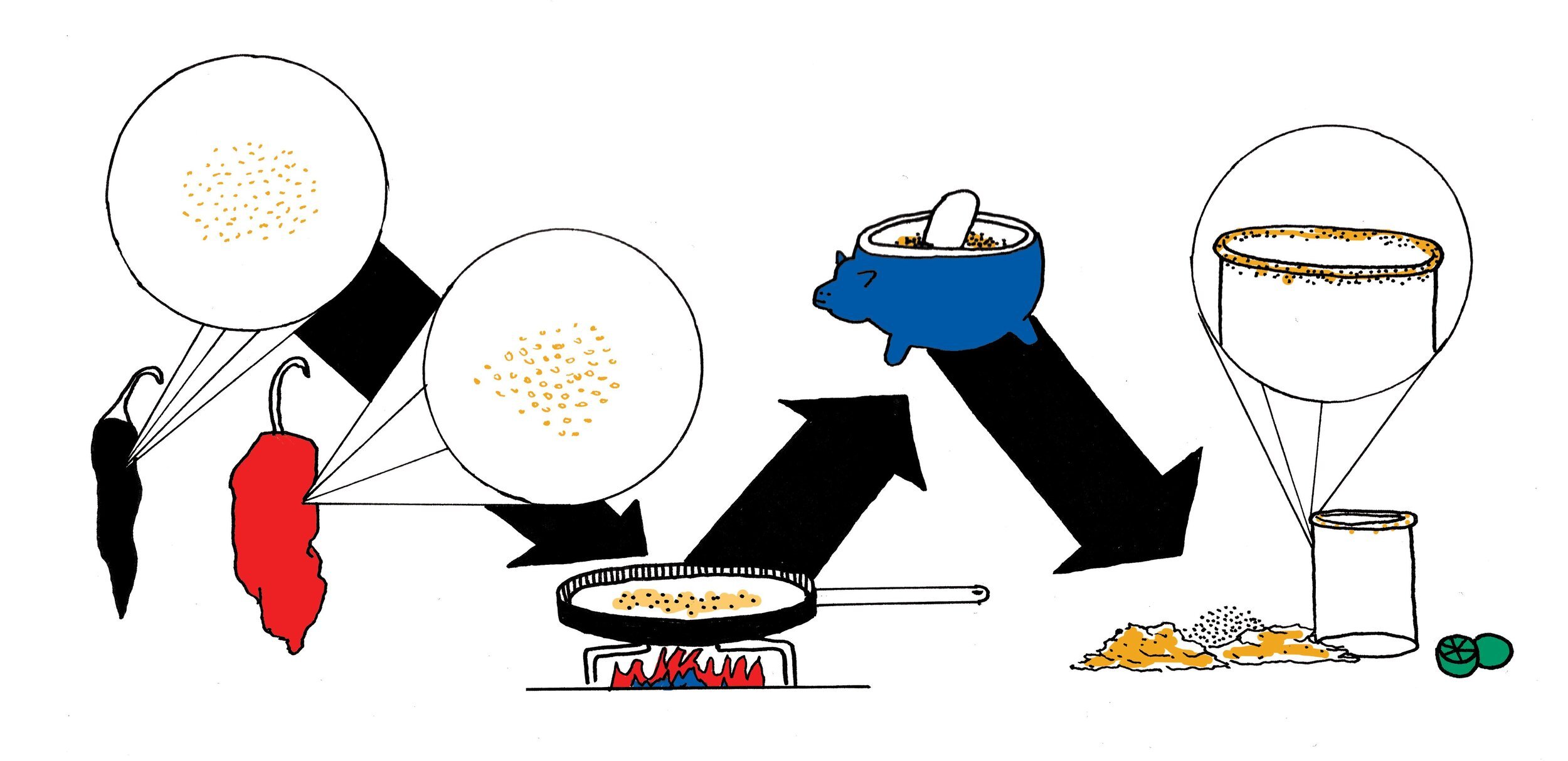The sixth sense? No, the sixth flavor!
“I began to sweat as the heat and pleasure rose. Then I had to stop eating. My nose was running, eyes were watering and I even felt a ringing in my ears...."
Written by Jorge Fitz | 4 min read
Illustrations by Emmanuel Peña
While on a road trip in Vietnam, I stopped to eat and ordered an amazing Pho Bó that was served with a side of fresh herbs, lime and some sliced chiles. Based on their color and size, I assumed the chiles were jalapeños and I scooped them generously into my soup. Huge mistake.
What follows may sound a bit esoteric: I was in a different realm, seeing everything from above. I remember our companion Lan ordering water for my husband and me with the genuine concern that I may not be okay. When I finally recovered, with the help of putting some salt on my tongue, I finished the soup. It was probably the most delicious soup I have ever eaten.
Capsaicin, the source of the sixth flavor
My friend Chef Lalo Plascencia has been investigating the effect of capsaicin on our bodies and its attributes as an authentic flavor over the past three years. He and his team propose that the “chile-ness” (not “spiciness,” because spice really is something different) of Mexican food be recognized and accepted as the sixth flavor. They have created a system for using dried Mexican chiles to support this claim.
“First of all, let’s call it by its actual name: chileness. Spiciness is something else, as it’s related to spice”
— Chef Lalo Plascencia
This has not been a simple task and has required extensive research. Mexican cuisine, on the UNESCO list of Intangible Cultural Heritage, has been using dried chiles for over 2,000 years, and since the Spanish Conquest has become a source of delicious fusion, complexity, subtlety and expression. Yet very little research has been done on the physiological and gastronomic implications of chiles.
Plascencia has a list of around 300 varieties of dried Mexican chiles that can be found throughout the country’s different regions. One surprising finding is that they originate from just 15 varieties of fresh chiles. So dried chiles are actually a human expression, involving ripeness, drying and direct and indirect smoking processes.
Lalo’s team’s methodology identifies all of the dried chiles’ parts such as the stem, seeds, veins, pulp and the water from soaking the pulp (often used); as well as how they are applied in the kitchen and in beverages.
They have created a technical manual that explains how to adequately clean and use each part of the chile step-by-step. While each chile has capsaicin, the specific parts have their own unique flavors and smells.
Lalo wants the food and beverage community to use and promote the proper use and application of the capsaicin found in dried Mexican chiles as a part of a more widespread recognition of the sixth flavor, in addition to bitter, acidic, sweet, salty and umami.
P.S. So what actually happened to me that day when I ate the Pho?
When the capsaicin entered in contact with my taste buds, these sent a message to my body that it was on fire. Since neurons don’t know the difference between “chile-ness” and being on fire, they interpret it as pain. My brain reacted with a rush of adrenaline, and as we Mexicans say, “me enchilé.” I was chilied out. The message my body was sending was clear, “Run! Get out of here!” Then, as my body realized that I was not in danger, the hedonic reversal (where pain becomes pleasure) kicked in with a surge of dopamine, leading to that “hurts so good” point of ecstasy that took me to another realm that day.
Rim your glass with pure capsaicin
Ingredients
Seeds from two or more pasilla chiles + seeds from two or more guajillo chiles + salt to taste + sugar to taste
Preparation
Remove the seeds from the chiles and toast them until they let off their aroma. Grind them with the salt and sugar. Use the resulting powder for rimming and beverages instead of worm salt.








